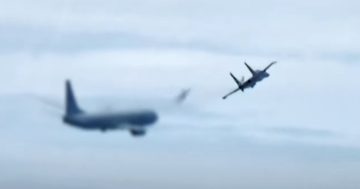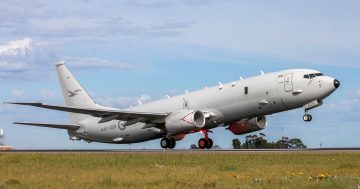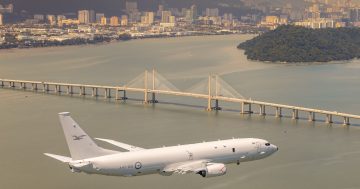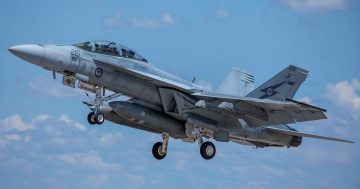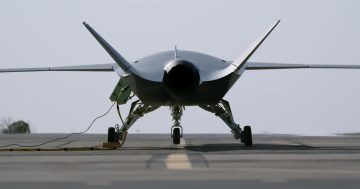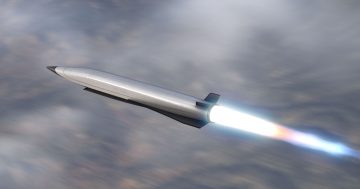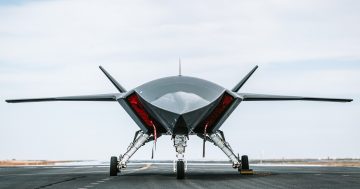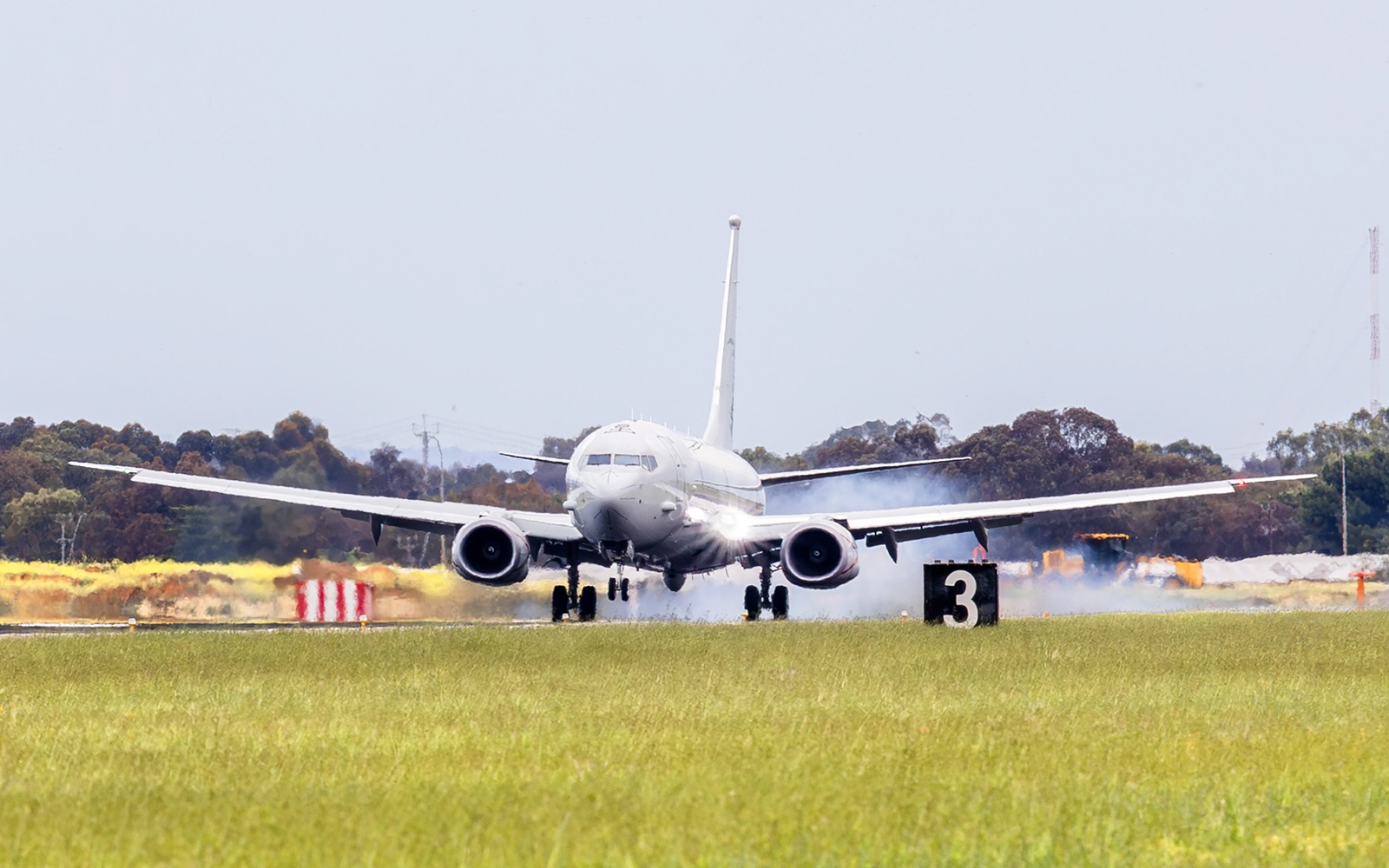
The RAAF’s 13th and penultimate P-8A Poseidon arrives at RAAF Base Edinburgh in mid-October. Photo: ADF.
A Royal Australian Air Force surveillance aircraft conducting a ‘routine’ mission has had another encounter with a Chinese People’s Liberation Army Air Force (PLAAF) fighter jet over international waters.
The Boeing P-8A Poseidon maritime response aircraft flying over the South China Sea on Sunday 19 October was intercepted by the fighter jet which has been reported as an advanced Sukhoi Su-35 Flanker-E, with the fighter twice flying across the P-8’s nose and releasing flares in its path.
The incident is the fifth such occurrence between PLA and ADF forces in recent years and the third involving an RAAF P-8A and Chinese fighter aircraft, the first being in May 2022 and the other in February this year.
Two other reported incidents include when a Chinese warship used its powerful underwater sonar near a Royal Australian Navy (RAN) frigate while there were Australian divers in the water resulting in minor injuries to the divers, and when a Chinese fighter also released flares ahead of an RAN MH-60R helicopter in March 2024.
China claims almost the entire South China Sea as its own territorial waters, even though the UN Convention on the Law of the Seas (UNCLOS) classifies it as international waters up to the 12-mile limit of nations surrounding it, including Indonesia, Malaysia, Brunei, Vietnam and Philippines.
Despite the UNCLOS ruling, China continues to harass maritime traffic in the region using its coast guard and loosely disguised ‘fishing boat’ militia, particularly that of the Philippines, and has conducted several unsafe and unprofessional air intercepts of military aircraft transiting the airspace in the region.
Defence Minister Richard Marles described the latest incident as “an unsafe and unprofessional interaction”, and said the Australian Government had “expressed its concerns to the Chinese Government”.
“On two occasions, it released flares very close to the Australian P-8 aircraft; having reviewed the incident very carefully, we’ve deemed this to be both unsafe and unprofessional,” he told media on Monday (20 October).
“So firstly, we are making the incident public. Secondly, we have advocated or raised this issue with the Chinese Embassy here in Canberra, and we have also made representations via our embassy in Beijing.”
The incident occurred on the day Prime Minister Anthony Albanese was winging his way to Washington DC for his long-anticipated first sit-down meeting with US President Donald Trump, although Mr Marles refused to be drawn on whether the timing of the incident was linked.
“I’m not going to speculate on that other than to say, this has clearly happened before, so it’s not the first occasion on which we’ve seen this, and that’s why we have a very set procedure that we go through in instances of this kind,” he said.
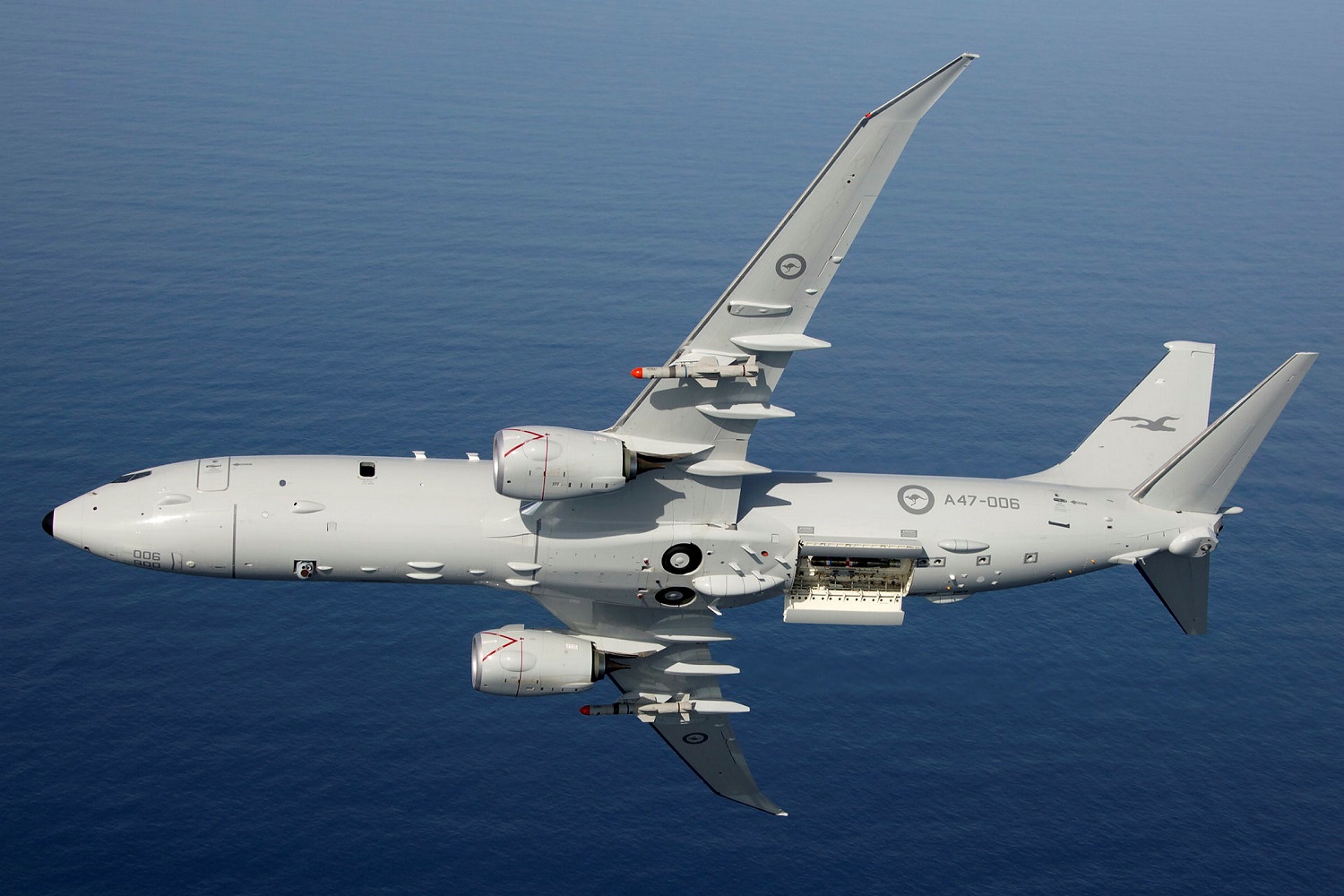
The P-8A is a highly modified version of the commercial Boeing 737 airliner, and is fitted with an internal weapons bay, missile racks, and an advanced electronic warfare capability. Photo: ADF.
The Chinese Government has claimed the P-8A was flying in its airspace, and it was therefore justified in intercepting the aircraft.
But Defence Industry Minister Pat Conroy said on 21 October this was incorrect.
“This incident occurred over international waters,” he told the ABC.
The P-8A was not damaged in the incident, although the consequences of such actions can be dangerous.
Combat aircraft carry dozens of phosphorous or magnesium flares that, when released during a defensive manoeuvre, burn at extremely high temperatures to draw attacking heat-seeking missiles away from the aircraft. Similarly, chaff packets of thin metal strips can distract an attacking radar-guided missile.
A qualified aircraft engineer with extensive experience on the Boeing 737NG airliner – upon which the P-8A is based – told Region there wasn’t much chance of a flare or piece of chaff being drawn into an engine’s low- or high-pressure turbine engine ‘core’.
Centrifugal forces from the wide chord fan blades generally prevent most foreign objects from entering the core of the engine, but they can still damage the fragile and finely balanced blades on the engine’s face.
While the risk of catastrophic damage is low given modern designs of wide chord fan blades, any foreign object injection into the engine core would result in major damage and an in-flight shutdown.
Boeing 737s are able to fly safely on one engine, but it would have undoubtedly forced the P-8 to abandon its mission and land at the nearest safe air base.
RAAF P-8As regularly conduct patrols in the South China Sea and wider region in support of Australia’s defence commitments such as the five-power defence agreement with Malaysia, Singapore, the UK and New Zealand, and its Operation Argos commitment to the enforcement of trade sanctions against North Korea.
The P-8As operate out of Clark Air Force Base in the Philippines, Changi West in Singapore, or Butterworth in Malaysia.
The incident occurred just days after the RAAF stood up a second squadron to operate an expanded fleet of 14 P-8As, an event which coincided with the penultimate delivery of the type to RAAF Base Edinburgh near Adelaide.
Operating alongside No 11 Squadron, the newly reformed 12 Squadron will contribute to Australia’s anti-submarine warfare, maritime strike and maritime intelligence, surveillance, reconnaissance (ISR) and response capabilities.
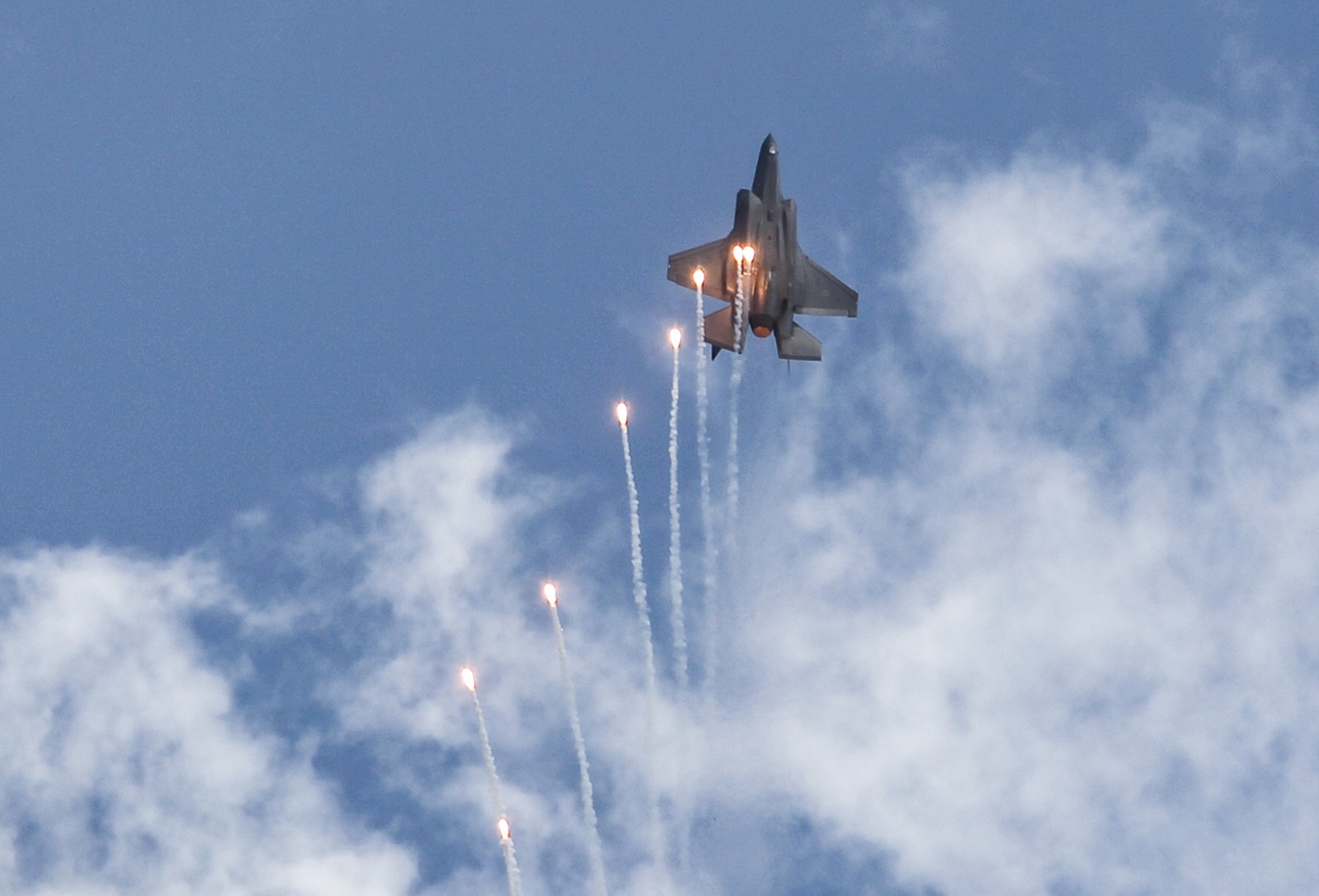
An RAAF F-35A fighter jet releases flares during a display at the recent Richmond Airshow. Most modern military aircraft carry flares for self-defence against heat-seeking missiles. Photo: Andrew McLaughlin.


